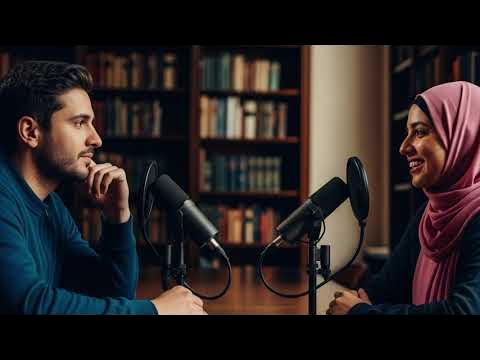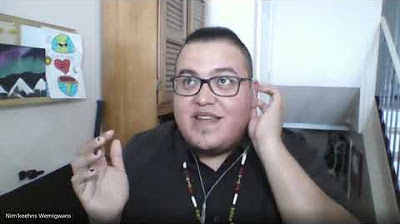Children on Camera - A Primer about Movies (1969) | BFI National Archive
Summary
TLDRThis engaging video explores the process of filmmaking through the eyes of children, emphasizing the importance of storytelling and visual language. It highlights how students can creatively select and arrange images to convey narratives, using basic equipment and their imagination. By learning to frame shots, edit sequences, and collaborate, children develop their filmmaking skills while experimenting with different perspectives. The video encourages them to view the world through a cinematic lens, transforming simple ideas into compelling stories, ultimately demonstrating that filmmaking is accessible to everyone.
Takeaways
- 🎥 Filmmaking can be accessible to everyone, even children, with minimal equipment and supervision.
- 🖼️ Learning filmmaking is akin to learning a new language, focused on understanding visual storytelling.
- 👀 It's essential to teach children how to observe and select details that convey a story in pictures.
- 📸 Framing is crucial; avoid unwanted details in the corners and maintain a standard aspect ratio (4:3).
- 🔄 Editing involves rearranging shots to enhance the story's tempo and meaning.
- 🧑🤝🧑 Collaboration among children enhances creativity; they should work in pairs to choose and arrange pictures.
- 📚 Using magazines and comics can help children practice storytelling through visual contrast.
- 🐻 Stories can be altered by editing; for instance, changing a bear into a hero by rearranging scenes.
- 🎬 Directors guide actors and help them rehearse, ensuring clarity in each scene's performance.
- 📐 Automation has simplified camera operation, allowing anyone to capture shots with ease.
Q & A
What is the main theme of the video script?
-The main theme is teaching children the art of storytelling through visual media, particularly film, by helping them learn to select and arrange images effectively.
How does the script suggest children begin learning about filmmaking?
-Children should start by observing and selecting pictures that tell a story, using images with plenty of action as their primers.
What role does editing play in filmmaking according to the script?
-Editing is crucial as it involves rearranging shots to alter the speed, content, or meaning of the story, effectively changing the narrative's impact.
Why is collaborative learning emphasized in the script?
-Collaborative learning is emphasized because it allows children to work in pairs, sharing ideas and perspectives, which enhances creativity and learning outcomes.
What practical tools are mentioned for teaching filmmaking?
-Practical tools include common classroom materials like magazines for selecting pictures and cardboard boxes to create a simple camera.
What is the significance of framing in visual storytelling?
-Framing is significant as it helps focus the viewer's attention on important details while avoiding distractions, thereby enhancing the storytelling experience.
How should the camera be positioned during filming?
-The camera should be positioned to capture all the action without being too close, ensuring a clear view of the scene while remaining stable.
What exercise do children perform with comic strips?
-Children are asked to arrange comic strips without captions in story order, which helps them understand sequencing and narrative structure.
How does the script suggest assessing children's understanding of visual storytelling?
-The script suggests leaving examples of their work on display to illustrate their understanding of visual storytelling concepts and techniques.
What is the ultimate goal of the filmmaking exercises described in the script?
-The ultimate goal is to empower children to express themselves creatively and confidently through visual storytelling by mastering the basics of filmmaking.
Outlines

Cette section est réservée aux utilisateurs payants. Améliorez votre compte pour accéder à cette section.
Améliorer maintenantMindmap

Cette section est réservée aux utilisateurs payants. Améliorez votre compte pour accéder à cette section.
Améliorer maintenantKeywords

Cette section est réservée aux utilisateurs payants. Améliorez votre compte pour accéder à cette section.
Améliorer maintenantHighlights

Cette section est réservée aux utilisateurs payants. Améliorez votre compte pour accéder à cette section.
Améliorer maintenantTranscripts

Cette section est réservée aux utilisateurs payants. Améliorez votre compte pour accéder à cette section.
Améliorer maintenantVoir Plus de Vidéos Connexes

Teaching Reading to Young Learners - Cara Mengajar Reading Untuk Anak Anak

The Rack Focus: How to Guide Viewers Eyes with a Shot List (Casino Royale) #rackfocus

Membaca Nyaring: Cerdas Mengulas Buku buku yang sudah dibaca

Perkembangan Anak Usia Dini - Stimulasi Perkembangan Bahasa Anak Usia Dini

Language and Literacy Development |Child and Adolescent Learners and Learning Principles

Film Talk with Nim'keenhs Wemigwans
5.0 / 5 (0 votes)
